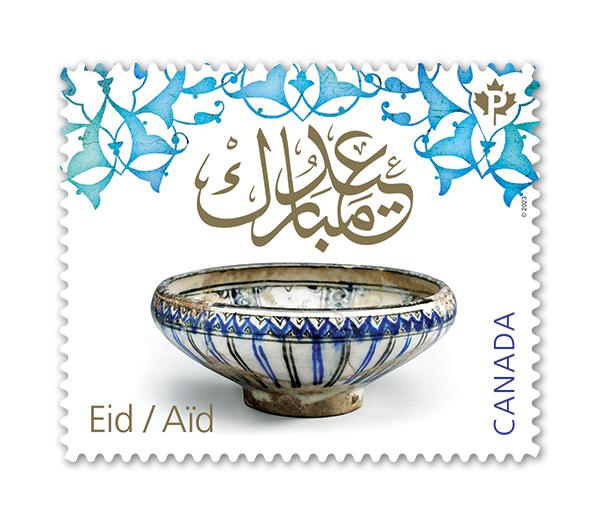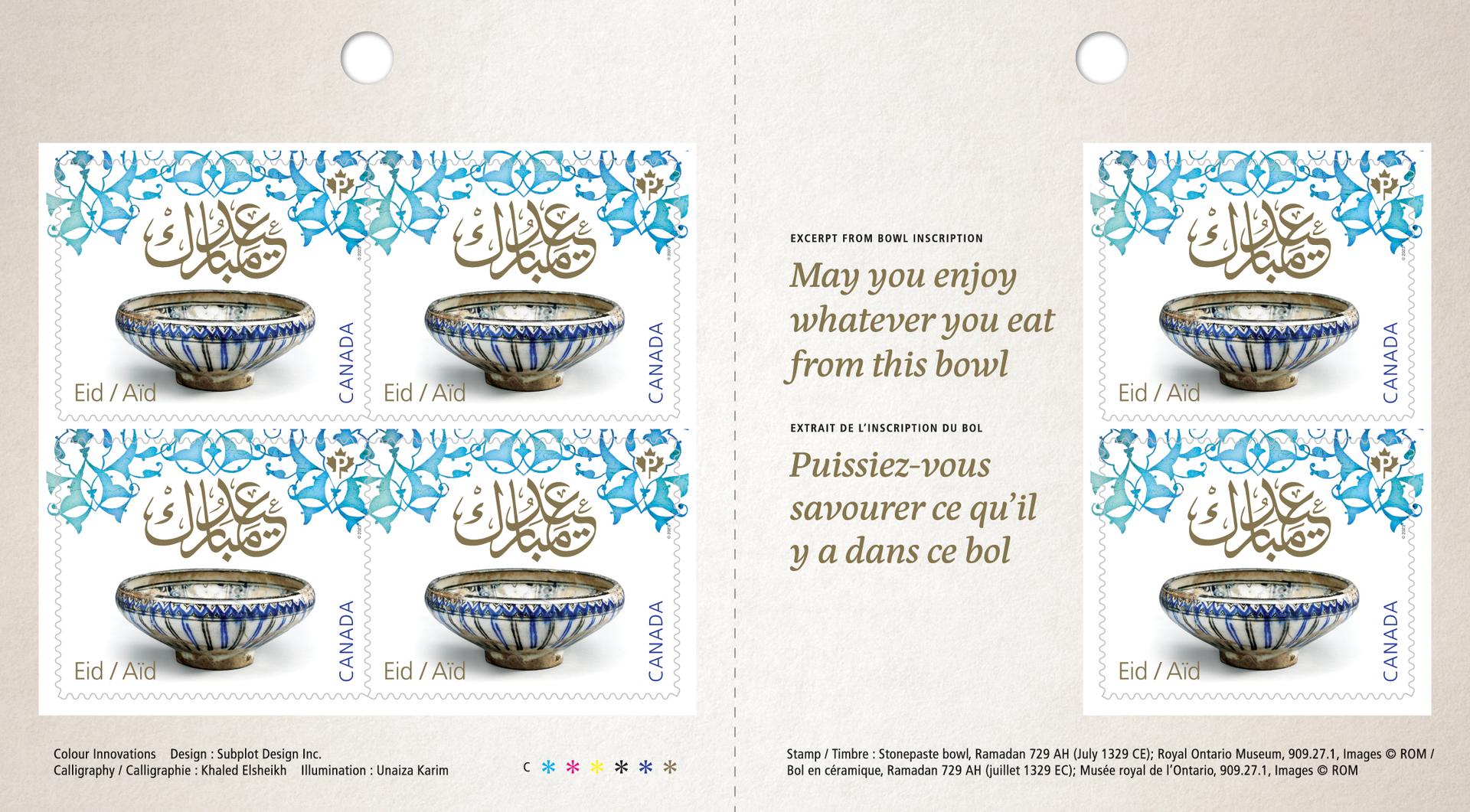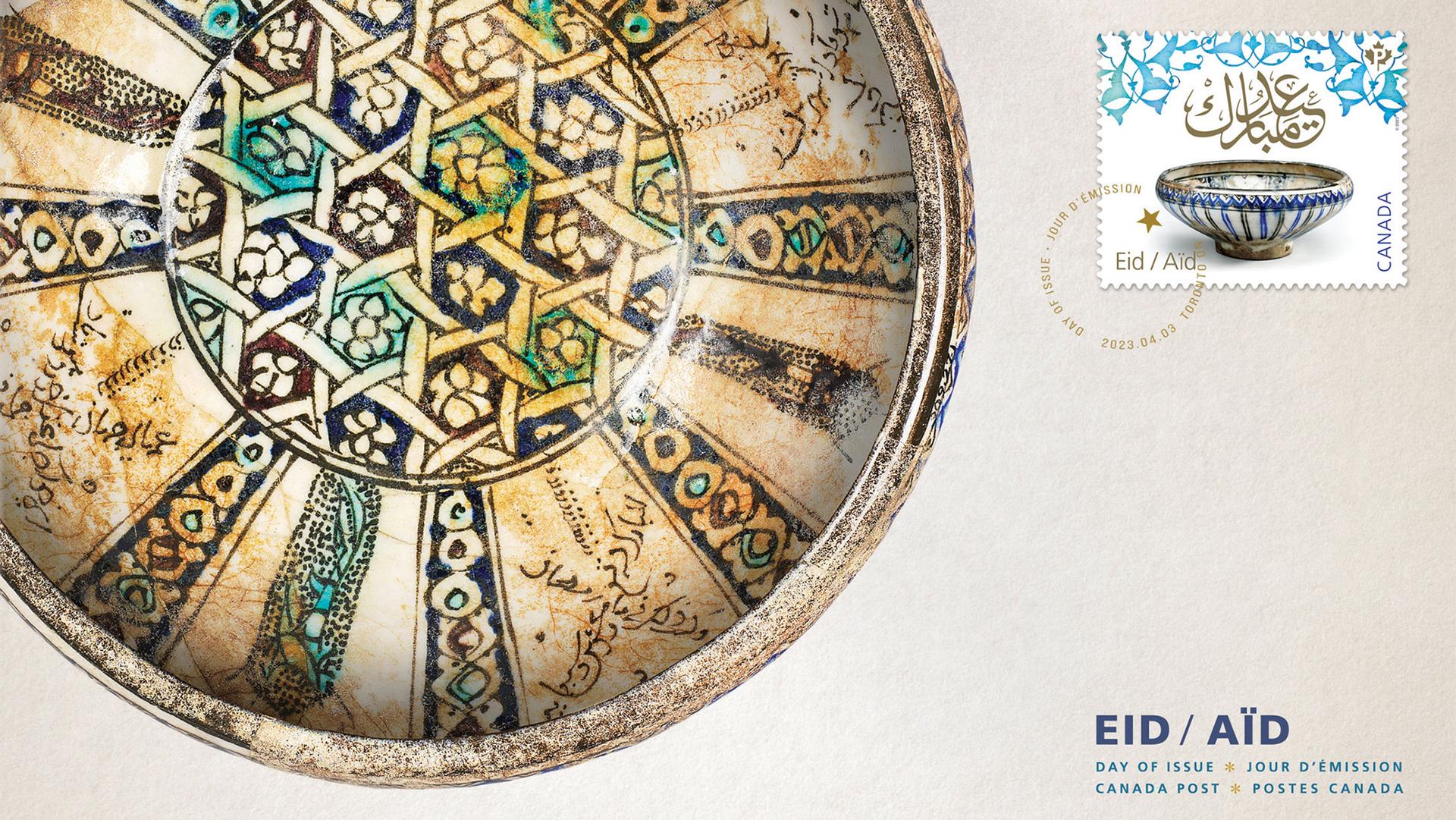Canada releases an Eid stamp each year during the Muslim holy month of Ramadan. Eid al-Fitr is the celebration that ends the month of fasting.
Previous mailing stamps have featured stylized Arabic text. But this year’s design is of an antique bowl that was made 700 years ago in Iran. The artifact pictured is part of the Islamic World collections at the Royal Ontario Museum.

Fahmida Suleman, who is the curator of that collection, has been helping Canada Post over the past two years to design this stamp. She said the bowl is symbolic because people used it centuries ago during Ramadan, likely for holding date fruits or even soup or a stew.
She added that she was also drawn to its elegant colors and design.
“It’s a lovely white glaze, but then, it has a beautiful blue, cobalt blue and black stripes,” she said.
Such a bowl would have been expensive given that it was made from a special stone paste material that was invented at the time to imitate Chinese porcelain.
Inside the bowl — in between geometric patterns and flowers — there are handwritten poems in Persian. They talk about wisdom and intellect, but also about forgetting the world’s sorrows for a moment to enjoy the food at hand.
Bronwyn Graves is the director of stamp services at Canada Post, which also releases special stamps for other holidays, such as Christmas, Hanukkah and Diwali.
“What symbols really speak to this holiday and to the community that celebrates this holiday?”
“Often when we’re looking at stamp ideas, it’s important for us to reach out to community members and say, ‘What stories should we be telling with this stamp? What symbols really speak to this holiday and to the community that celebrates this holiday?’”
The Eid stamp also features Islamic patterns by artist Unaiza Karim.

Meanwhile, curator Suleman said that next year’s stamp design is already well underway. Without giving away too many details, she said, “It’s related to a special, delicious pastry that many people in the Middle East eat.”
Related: At Boston’s first Yemeni restaurant, food, community and tradition are on the menu this Ramadan
Our coverage reaches millions each week, but only a small fraction of listeners contribute to sustain our program. We still need 224 more people to donate $100 or $10/monthly to unlock our $67,000 match. Will you help us get there today?
